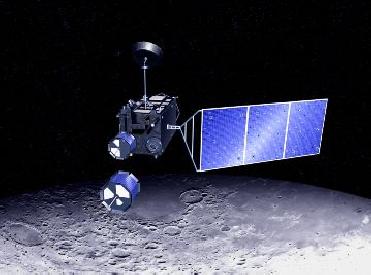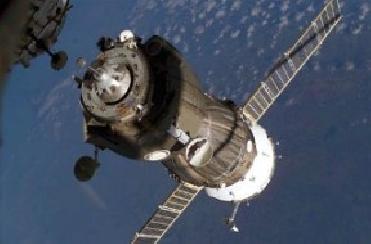
An illustration of KAGUYA (SELENE) probe orbiting around the Moon. JAXA Photo.
PARIS (AFP): Japanese astronomers Sunday said they had found traces of a mineral that adds an important piece of knowledge to the puzzle of the Moon's geological past.
Using a instrument-laden probe, Kaguya, which was placed in orbit around the Moon in 2007, the team found abundant signatures of the mineral in concentric rings in three big crater regions.
The mineral, called olivine, is deemed to be a telltale of mantle, the deep inner layer of iron- and magnesium-rich rock that lies beneath the Moon's crust.
A leading theory is that the Moon was created about 4.5 billion years ago after the "Big Whack" -- it was ripped from Earth after our planet suffered a gigantic collision from some space object.
As the material coalesced into a ball, its surface gradually cooled, forming a crust made of a light-coloured aluminous mineral, feldspar, which floated in a dense, molten liquid.
Kaguya's data add a chapter to this "lunar magma ocean" hypothesis.
It suggests that after the crust had formed, there was some massive overturn in the fiery liquid beneath.
Olivine-rich mantle was brought from deep within the lunar bowels to within the base of the crust.
At the craters sampled by the probe -- the South Pole-Aitken, Imbrium and Moscoviense impact basins -- the Moon's crust is very thin, and the olivine mantle may have been exposed by asteroids that smashed into the lunar surface, the paper suggests.
 Previous Article
Previous Article Next Article
Next Article












The Indian Air Force, in its flight trials evaluation report submitted before the Defence Ministry l..
view articleAn insight into the Medium Multi-Role Combat Aircraft competition...
view articleSky enthusiasts can now spot the International Space Station (ISS) commanded by Indian-American astr..
view article